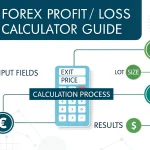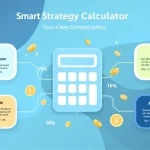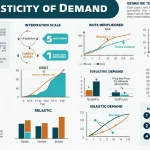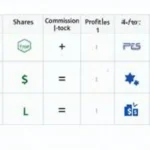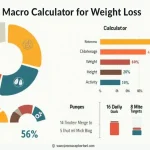Return on Investment Calculator
Is this tool helpful?
How to use the tool
- Step 1 – Current Value: Type the asset’s latest market price, e.g., $12 345.00 for stocks or $3 200.00 for a collectible.
- Step 2 – Cost of Investment: Enter what you originally paid, such as $10 000.00 or $4 000.00.
- Step 3 – Calculate: Press “Calculate ROI” to display profit or loss instantly.
- Step 4 – Read the breakdown: The tool lists your inputs and returns a percentage so you can compare investments fast.
Formula used
$$ ROI = rac{\text{Current Value} – \text{Cost}}{\text{Cost}} \times 100\% $$
Example A
- Current Value: $12 345
- Cost: $10 000
$$ ROI = rac{12 345 – 10 000}{10 000}\times100\% = 23.45\% $$
Example B
- Current Value: $3 200
- Cost: $4 000
$$ ROI = rac{3 200 – 4 000}{4 000}\times100\% = -20\% $$
Quick-Facts
- ROI turns positive above 0 %, signalling profit (Investopedia, 2023).
- Average annual S&P 500 ROI ≈ 10 % from 1957-2022 (S&P Dow Jones Indices Fact Sheet 2023).
- Negative ROI means the asset lost value (SEC Investor Bulletin 2022).
- ROI ignores holding time; use IRR for time-adjusted returns (CFA Institute Guide 2023).
FAQ
What does a positive ROI tell me?
A positive percentage shows your investment earned more than its cost, indicating profit and capital growth (Investopedia, 2023).
Can ROI be used to compare totally different assets?
Yes—because ROI is a percentage, you can rank stocks, real estate, or equipment on the same scale (CFA Institute Guide 2023).
Does the calculator include fees and taxes?
No. Input net figures if you want a post-expense ROI; otherwise the result reflects gross performance (IRS Publication 550 2022).
Why is time not part of the formula?
ROI captures size of gain, not speed; “add time-weighted metrics for rate-of-return insight” (Morningstar Methodology Note 2023).
What is a “good” ROI for long-term stocks?
Beating the historical S&P 500 average near 10 % annually is considered strong (S&P Dow Jones Indices Fact Sheet 2023).
How often should I recalculate ROI?
Quarterly reviews align with typical financial reporting cycles and capture market swings (SEC Investor Bulletin 2022).
Important Disclaimer
The calculations, results, and content provided by our tools are not guaranteed to be accurate, complete, or reliable. Users are responsible for verifying and interpreting the results. Our content and tools may contain errors, biases, or inconsistencies. We reserve the right to save inputs and outputs from our tools for the purposes of error debugging, bias identification, and performance improvement. External companies providing AI models used in our tools may also save and process data in accordance with their own policies. By using our tools, you consent to this data collection and processing. We reserve the right to limit the usage of our tools based on current usability factors. By using our tools, you acknowledge that you have read, understood, and agreed to this disclaimer. You accept the inherent risks and limitations associated with the use of our tools and services.


